The Selva fork is the newest enduro fork from Italian motorcycle and mountain bike suspension/brake manufacturer, Formula. We got one a huge 160mm travel 29er version to test, and gave it to our similarly long-legged Yorkshireman, Mr Tom Hill, who’s spent a solid four months aboard this exotic Italian slider. Over to Tom!
Formula probably isn’t the first company that you think of when it comes to suspension. Brakes maybe. But forks? not so much.
The Italian firm has quietly been turning out a couple of forks for a few years now, and have an even richer history in motorbike parts. Formula is now curating a neat little range of forks, starting with the 33 – a lightweight 33mm stanchioned trail/XC fork that offers 100-130mm of travel in both 27.5in and 29in versions.
For the longer travel crowd, Formula offers the 35 and the Selva. Both forks use a burly construction with 35mm diameter stanchions, and come in 27.5in and 29in sizes with up to 160mm of travel. Need more than that? There’s an ‘Extended’ version that comes with a huge 170-180mm of travel, and a claim as being the lightest fork on the market in that travel bracket.
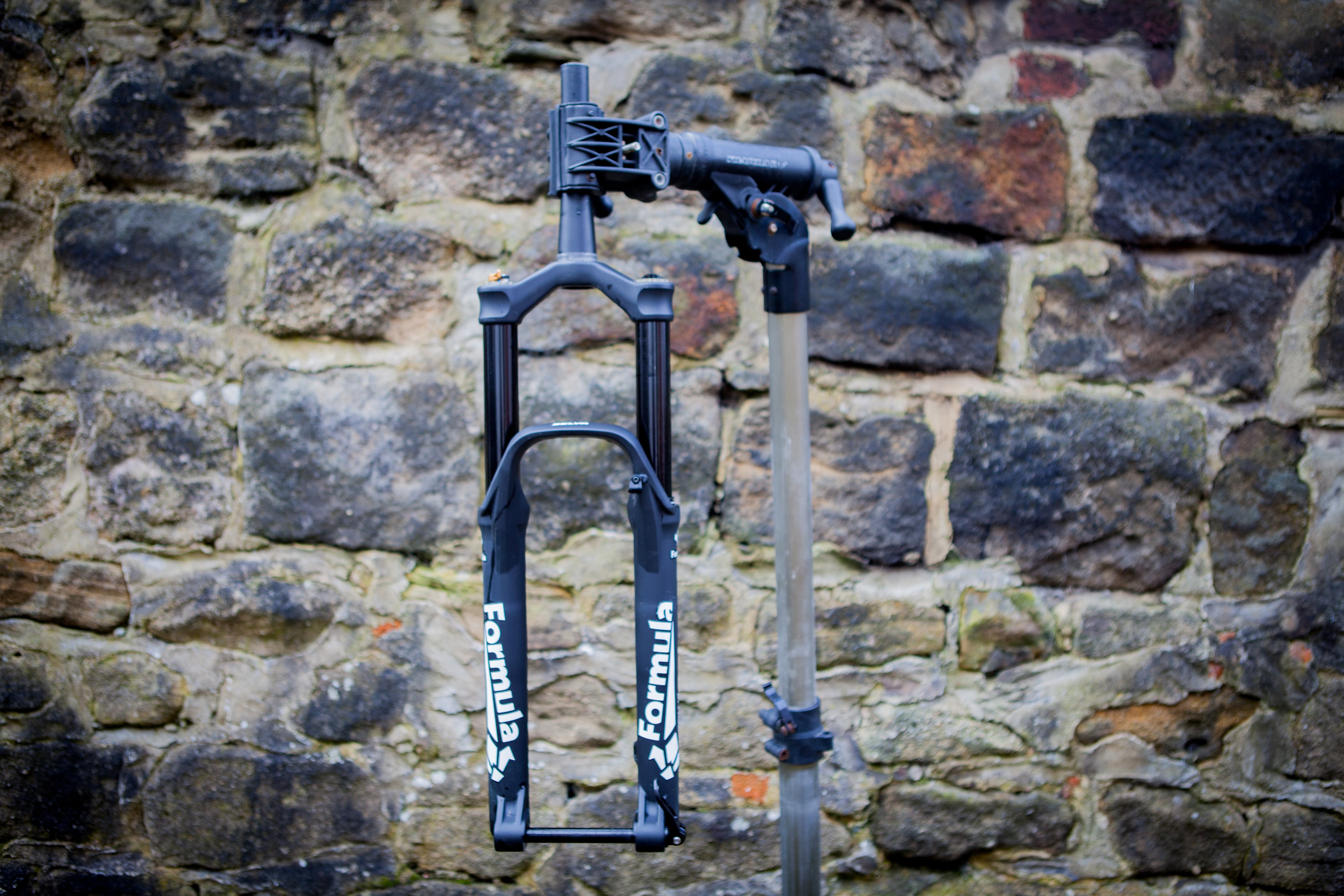
So what’s the difference between the 35 and the Selva? Aside from the name, the Selva is entirely dedicated to Boost hub spacing, whereas the 35 is only offered with 100x15mm dropouts. Because of the wider 110mm Boost hub spacing (Boost 15mm and Boost 20mm axles are both available), the Selva is the burlier of the two. It’s heavier by a good couple of hundred grams (a healthy 2115g as confirmed for our test fork), and the 29in Selva is also capable of accommodating 27.5+ wheels and tyres.
Back to Formula. For completeness, we should note that they also have a dual-crown downhill fork in their range – the Nero. Now back to the Selva.
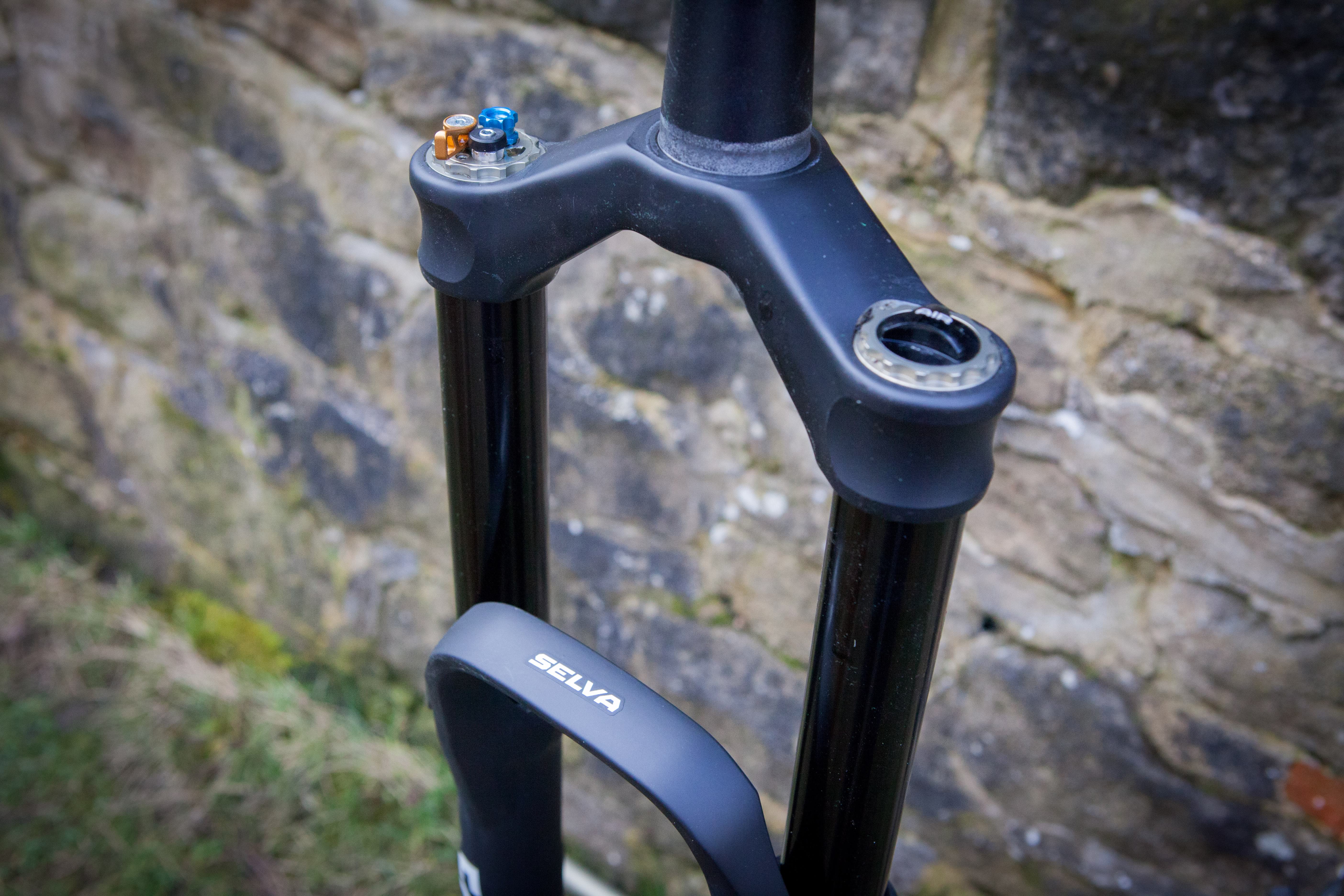
What You Looking At Punk?
With its wide stance and 35mm diameter stanchions, visually the Selva looks the part. After a cursory glance, my eyes (and those of everyone who has checked the fork out in person) are drawn to the steam-punkesque collection of levers and dials on the top of the right fork leg. This actually holds the controls for compression adjustment and lock out (as well as the lock-out threshold). The machined and anodised parts absolutely look the part and have that tactile feel that urges you to twiddle away and flick levers.
We’ll come back to what all that twiddling does a bit later on.
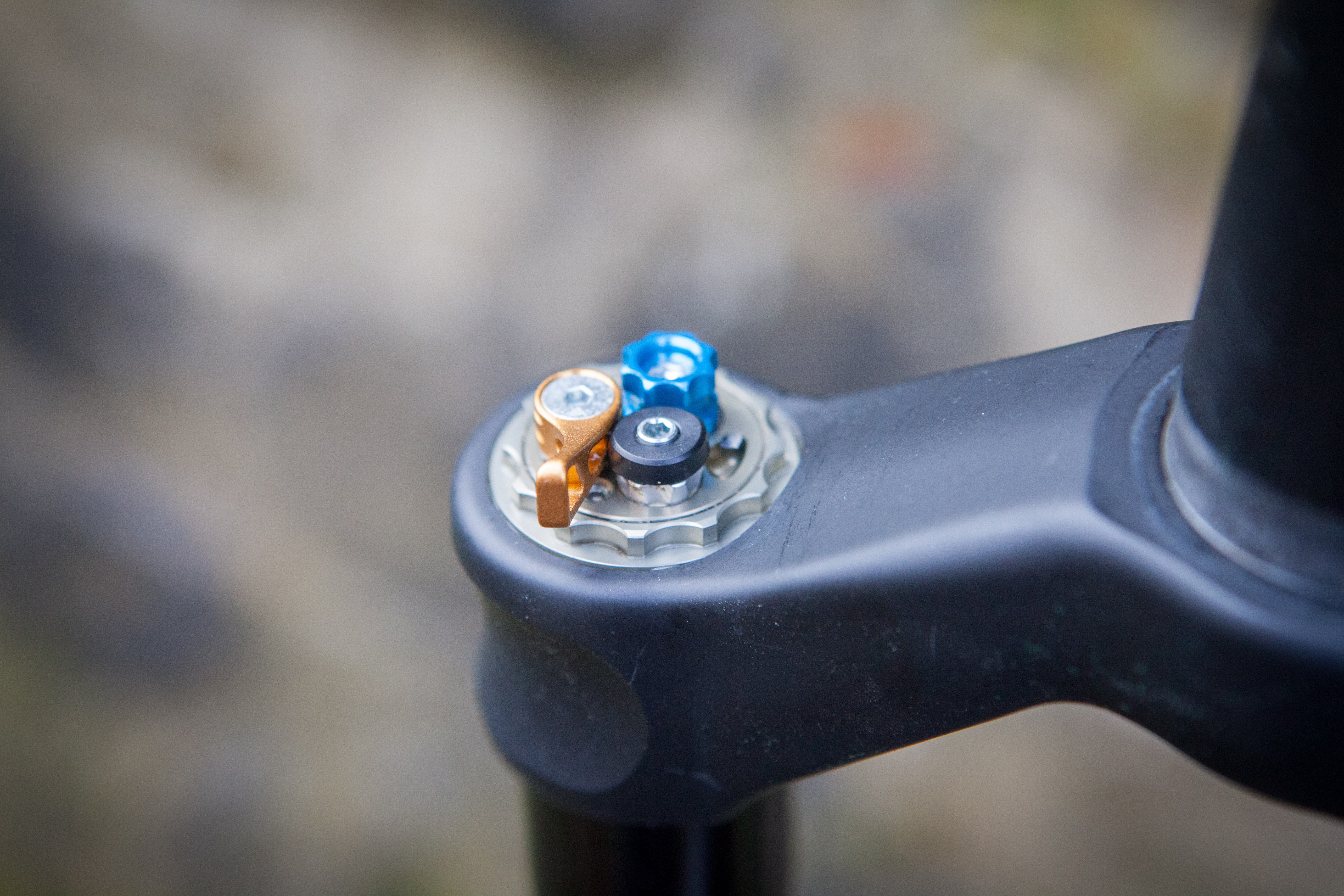
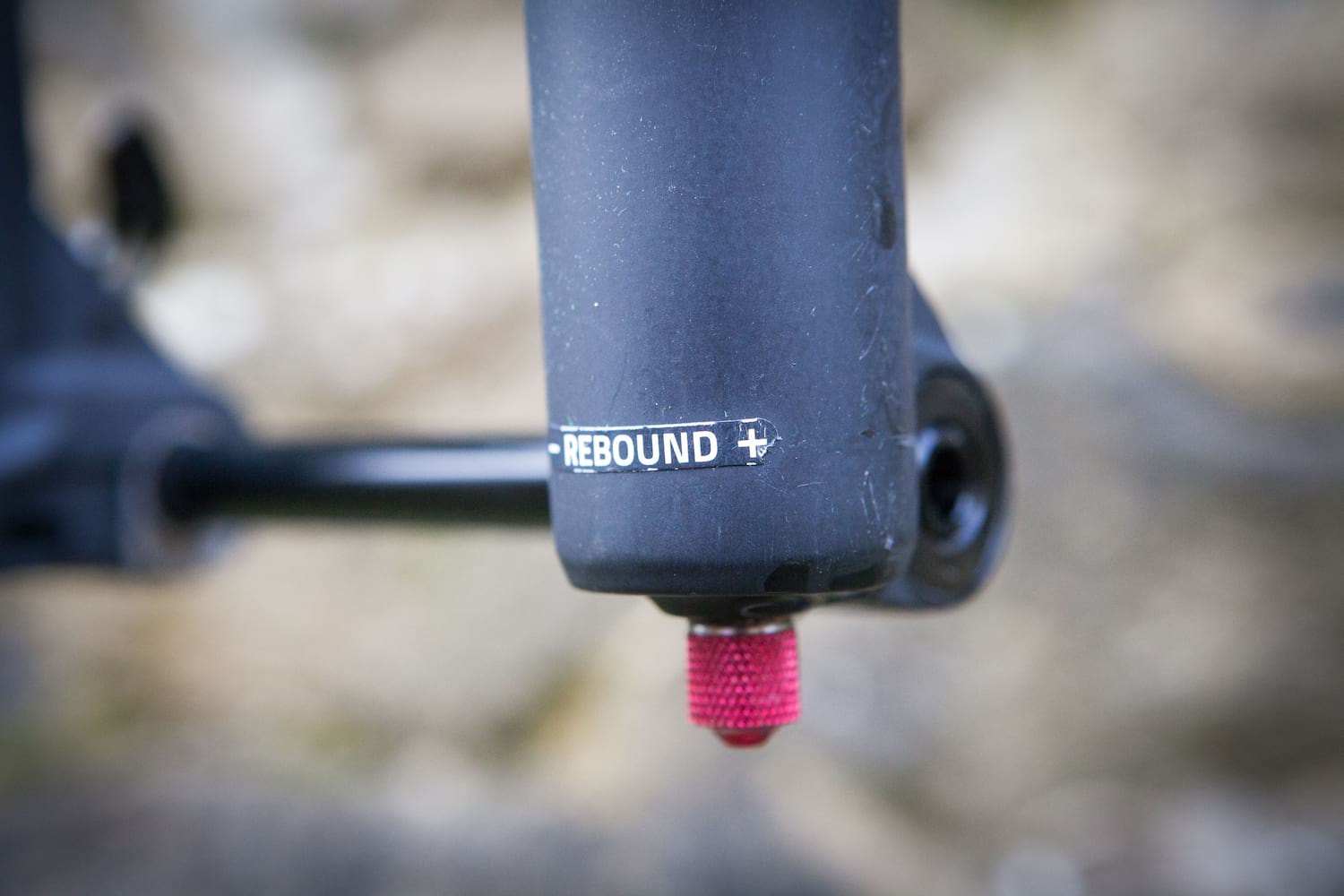
At the other end of the leg is the rebound adjuster. A chunky red knob offers 21 clicks of adjustment – each offering a discernible difference and across the range gives a full spectrum of rebound from bunny rabbit on a pogo stick to waterlogged Welsh bog.
The thru-axle is clever. Formula calls it “Integrated Locking System”, or ILS. The 15mm bolt thru (a 20mm version is an option) comes with a camming lever. Little revolutionary there, but should you wish to save some weight, the lever actually pops out. Removal/replacement can then be done with a 5mm hex-key. I had some mild concerns about how secure the ILS would be when riding and had visions of it being removed by errant undergrowth. It’s actually a firm fit though, so for the marginal weight savings, I didn’t think it was worth removing and happily used the lever with no problems throughout the test.
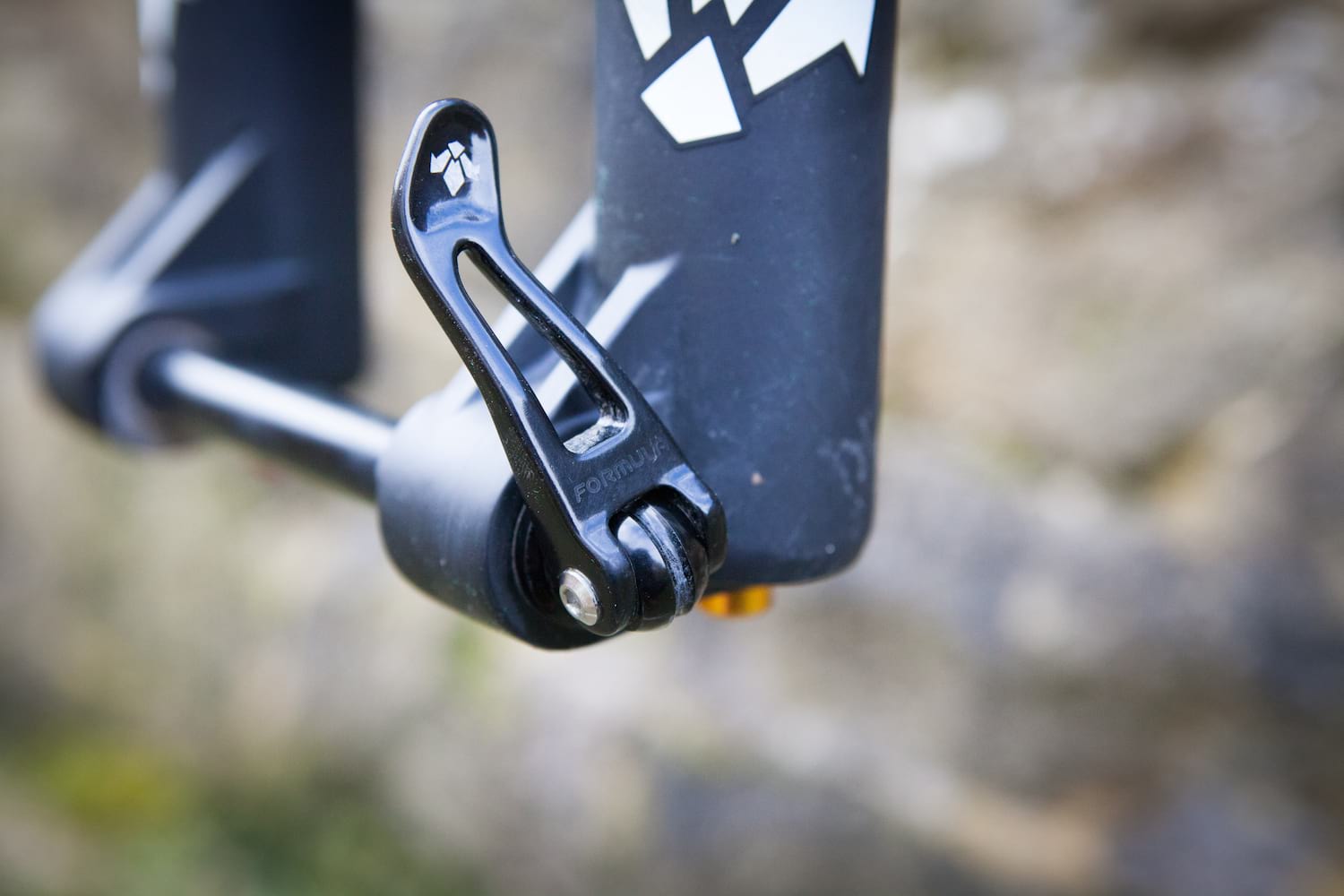
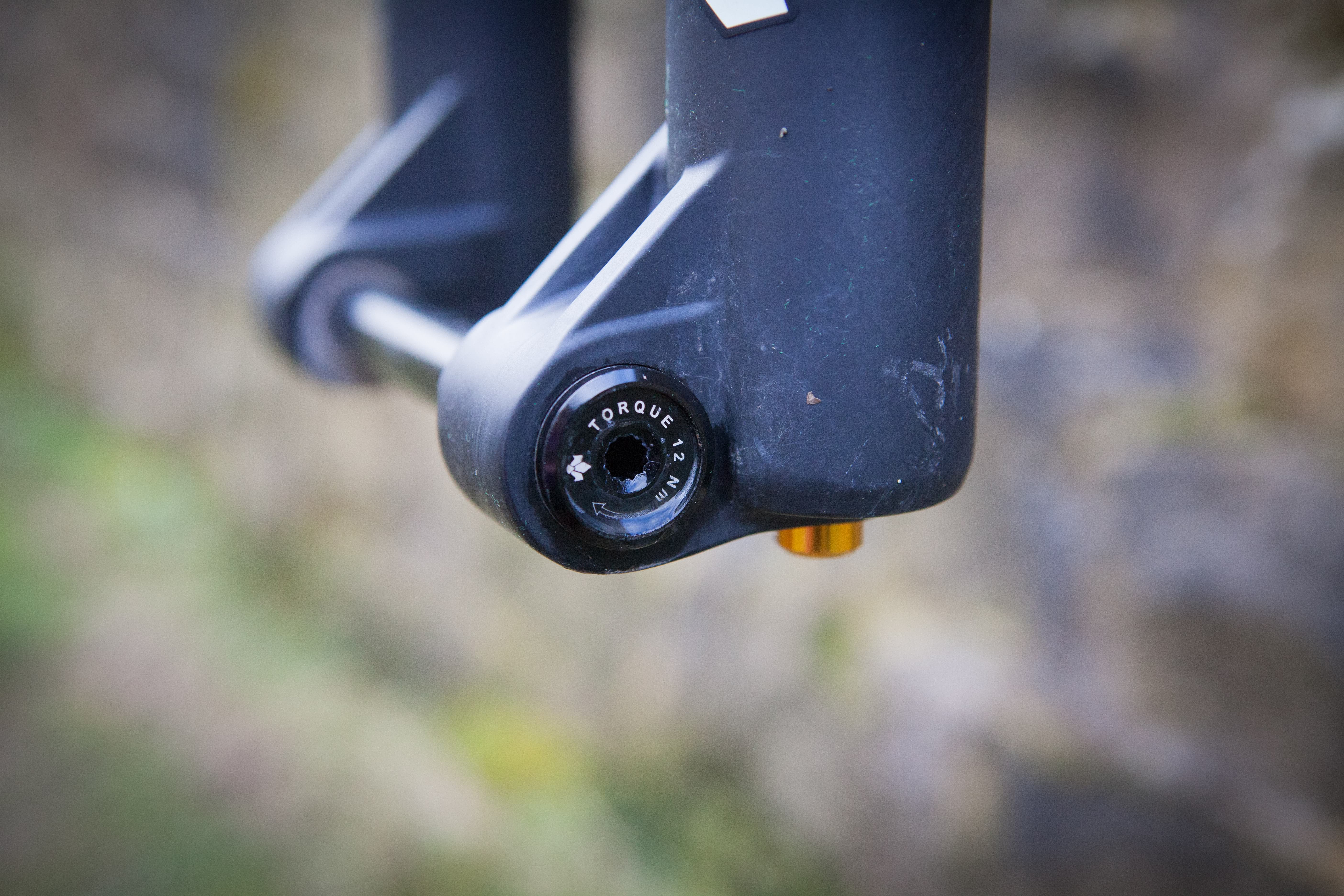
Beauty Isn’t Just Skin Deep
Moving to the internals, and the Selva uses “Internal Floating Technology”, or (you guessed it) IFT. Formula manufacture the hydraulic cartridge to be “structurally merged” (the company’s words, not mine) with the stanchions and lower legs. Rather than just relying on slippery stanchion coatings to reduce friction (which works just fine until twisting and flexing forces cause some binding) those crafty Italians have tried to isolate the cause and impact of friction altogether by creating a stiffer fork and one that remains freer and more active even when flexed.
Helping out with that lateral stiffness is another feature, sadly lacking a neat three-letter acronym though. The Hexagon Design is reminiscent of the power bulges seen on RockShox forks, but er, hexagonal. The thinking being that the shape, extra material and extra room for larger bushings stiffens up the fork without needing to increase the whole fork diameter.
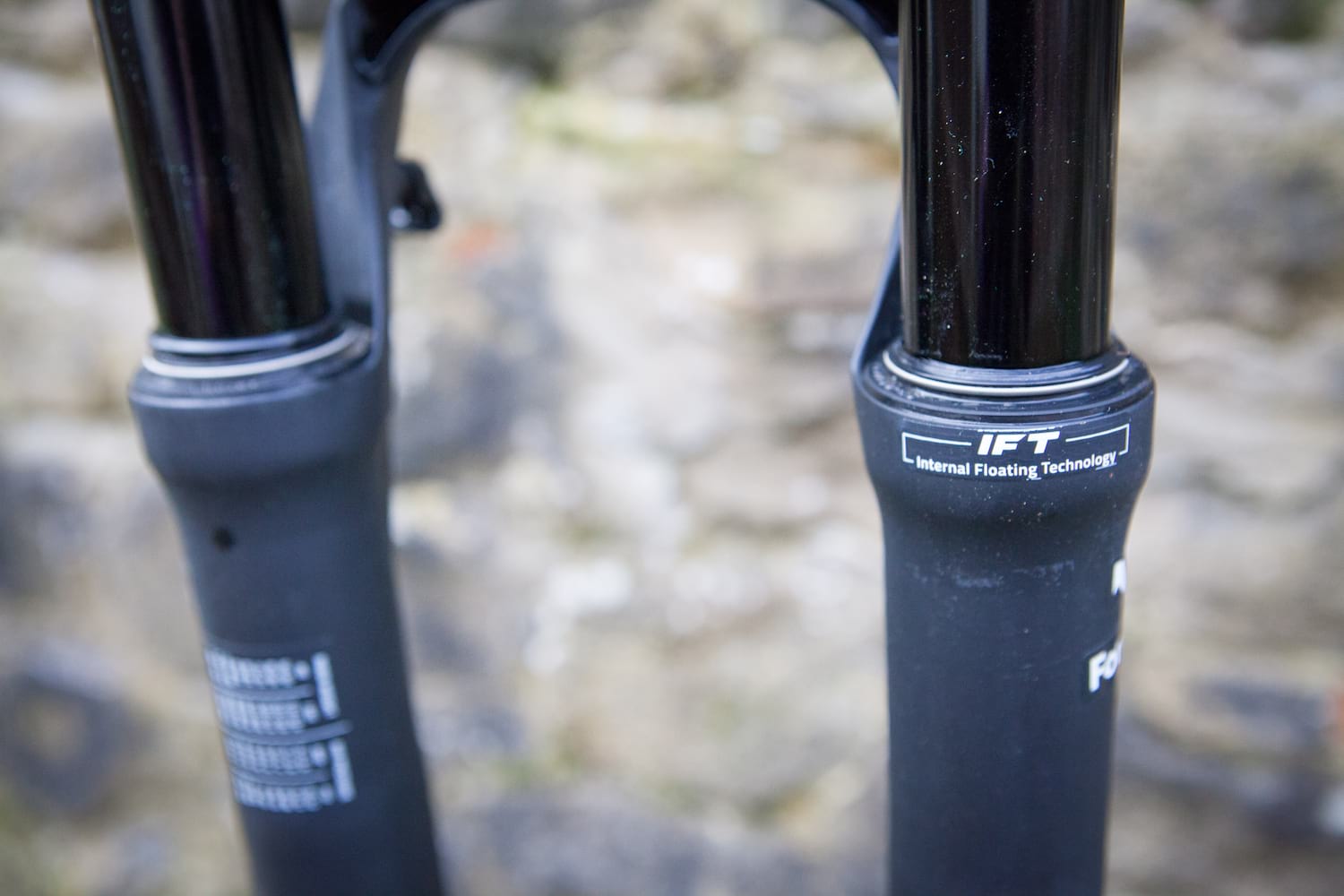
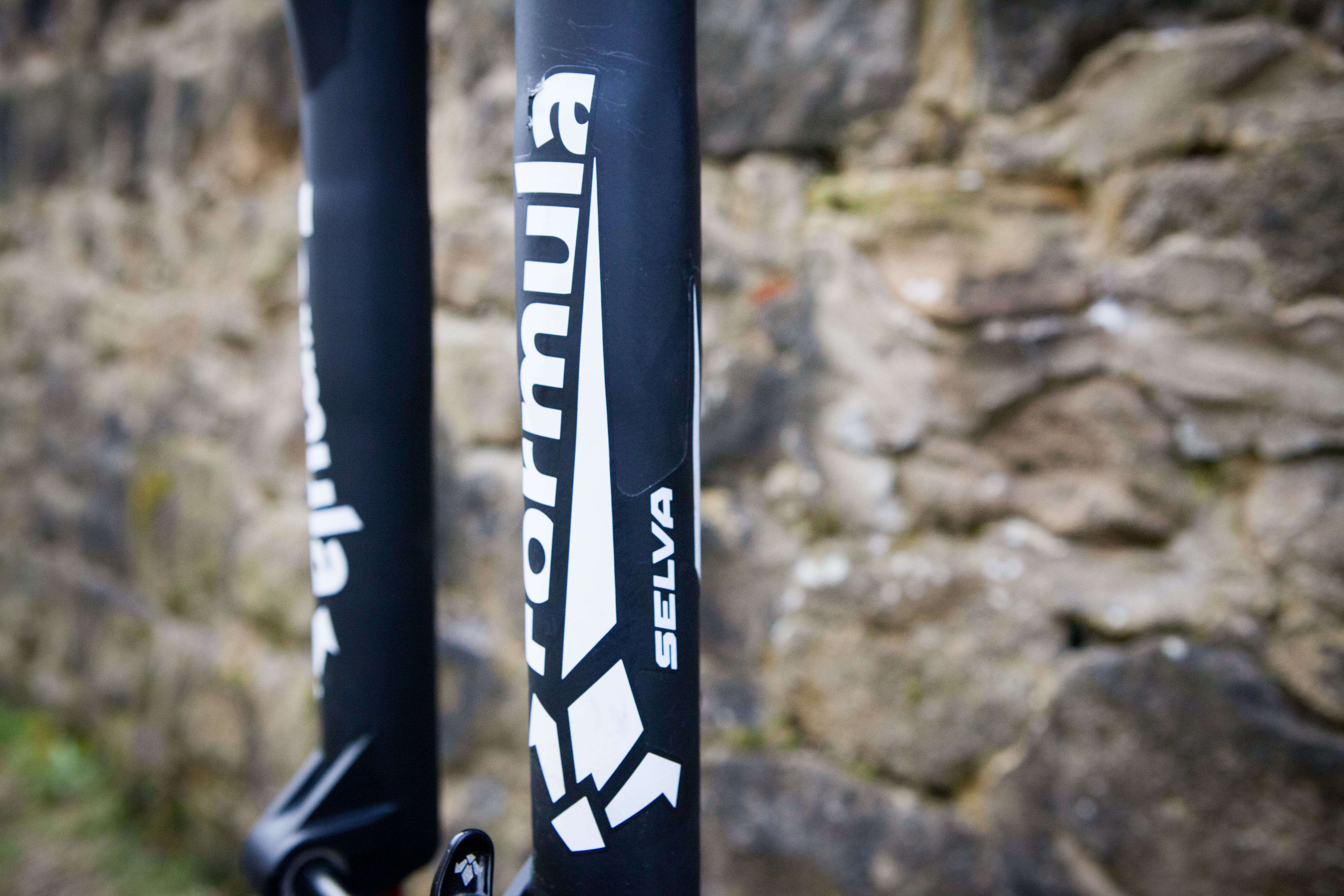
Twiddling Dials
Right, back to those dials… and more importantly what they do. First off, the gold lever is a lock out. Push it up to half way and it firms up the high speed damping noticeably. Should you wish to increase how firm the fork becomes, you can twiddle that black knob to fine tune. Finally, push the lock out lever all the way round and you can guess exactly what happens. Even on long fireroad or tarmac climbs, I’ve never been overly bothered by locking any fork out, so other than saying that it does what it is meant to, there’s little more that I can add there. It will be one of those features that is an absolute must to some and absolute “meh” to many others.
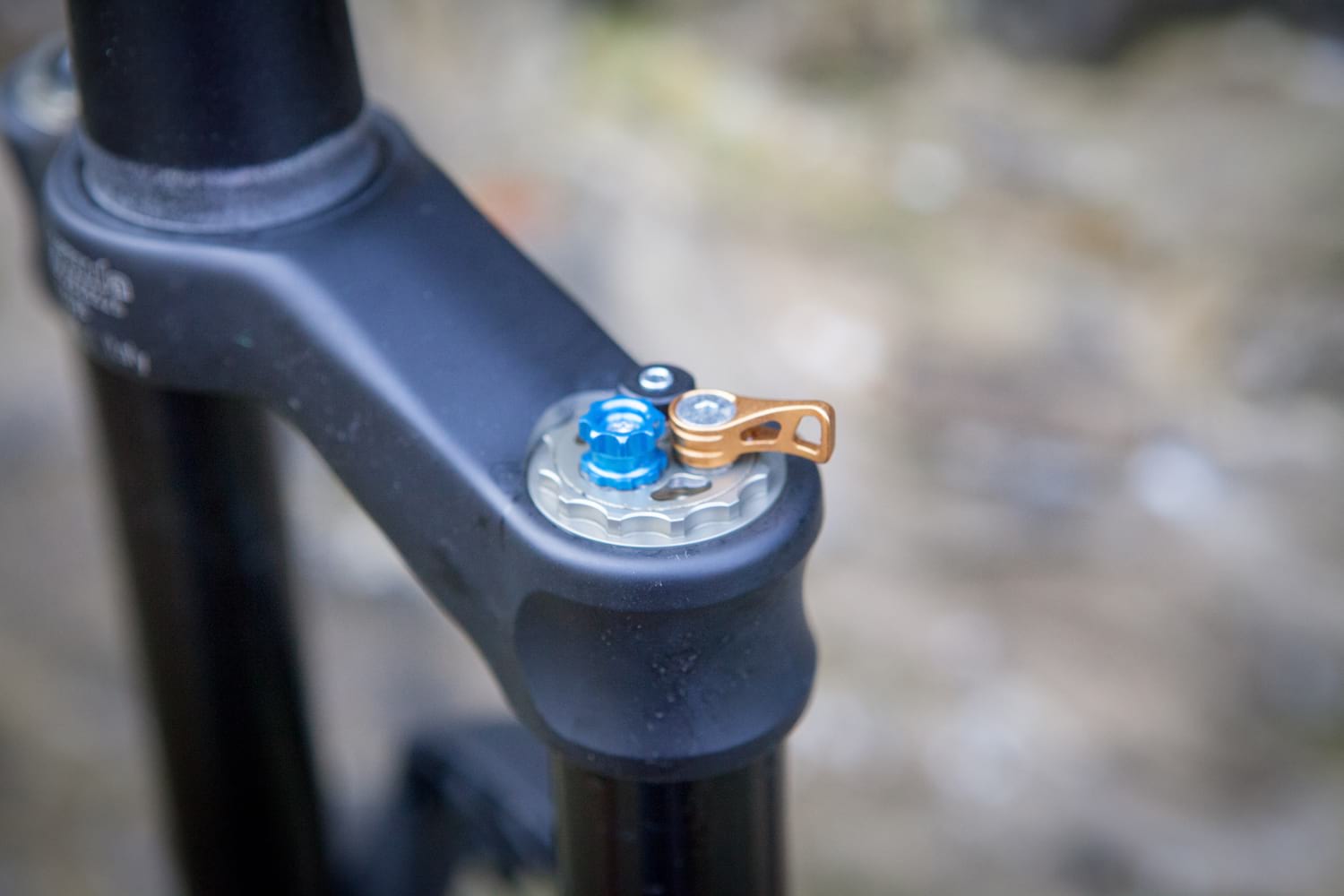
Low-speed compression is then adjustable via the blue dial. This had 12 clicks, and once again makes a noticeable difference to ride feel. Hidden underneath that blue dial is Formula’s CTS Valve system. It’s hard to give a short summary of what this is or how it works, but I’ll try my darnest.
CTS stands for Compression Tuning System. Essentially there are seven modular, colour-coded interchangeable valves that can be swapped around and screwed into the top of the fork. Each changes the compression characteristics of the fork, without altering the air volume. This allows more fine tuning than simply adding/removing tokens or spacers as it goes well beyond making the fork more/less progressive. The valves alter the feel of the fork throughout the entire stroke. To do this, the valves sit as part of the hydraulic damping cartridge. Phew. So there.
The good news is, changing valves probably takes less time than reading that paragraph. Here’s a really handy video to show you how the magic happens;
https://www.youtube.com/watch?v=qnx5b-dcV_U
The Selva fork comes shipped with a Blue CTS valve (Medium tune) inside, though also included in the box is a Red CTS valve (Firm tune) as a spare part, the CTS tool, another tool for undoing the top caps, spare oil and a shock pump. Using the provided tool, changing out the CTS valve s a two minute job.
Finally, it is also possible to adjust how progressive the fork feels by adding/removing the quantity of oil in the air spring. This is essentially the same as using tokens to reduce the internal air volume of the fork. The stock volume comes at 5cc, but it is possible to add oil up to 25cc total volume if you prefer a much more progressive set-up.
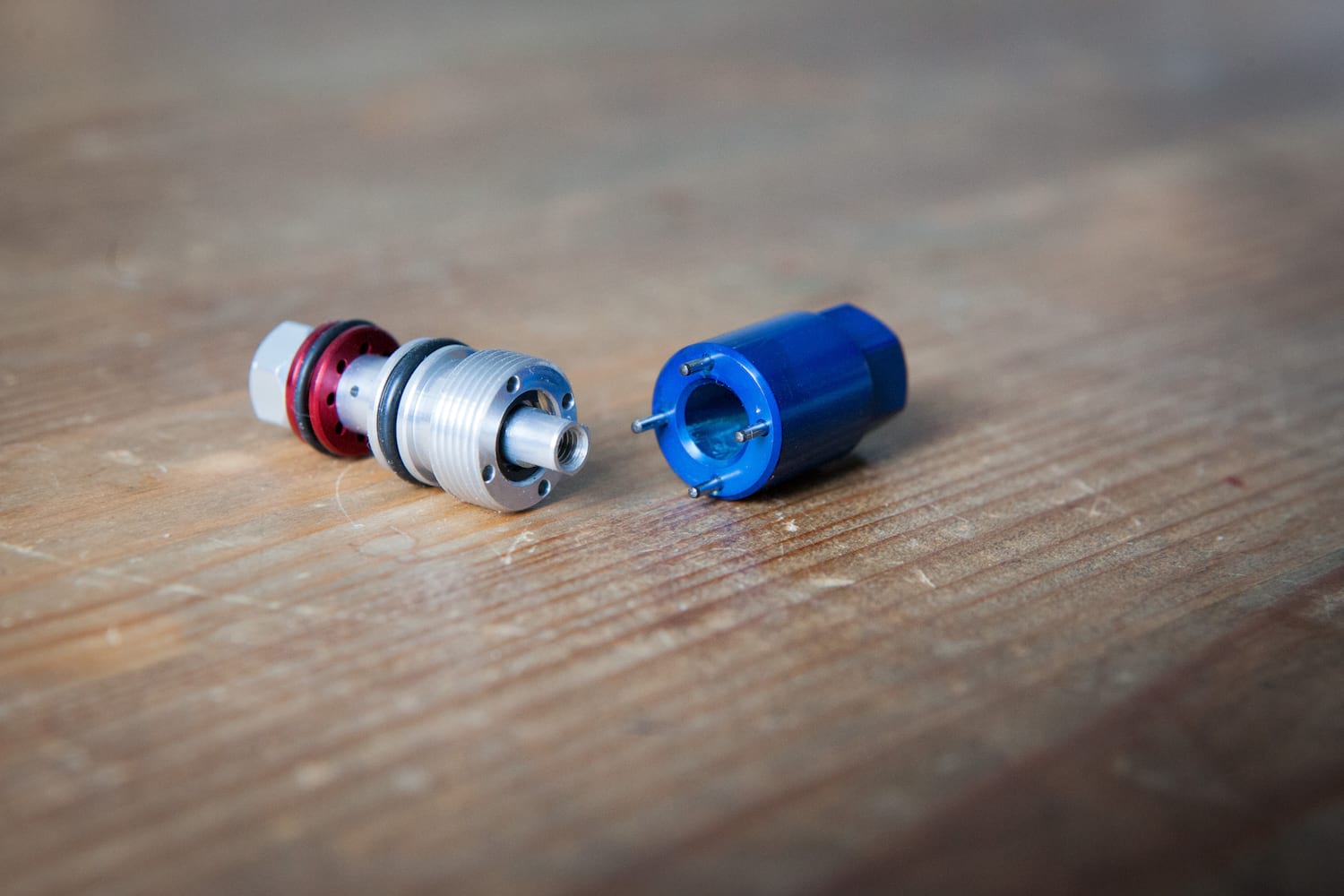
Formula Selva Features
- Enduro/All mountain fork
- 35mm diameter stanchions
- 27.5in and 29in (tested) sizes available
- Travel: 120-160mm travel (internally adjustable in 10mm increments)
- ‘Extended’ 27.5in version with 170-180mm travel
- Drop – In Cartridge with Internal Floating Technology
- Crown mounted lock out, bar option available
- Adjustments: Compression – Low Speed 12 click adjustment. Rebound – 21 click adjustment
- Tuning – compression via CTS Valves and/or oil volume
- Dropouts: 110x15mm Boost or 110x20mm Boost
- ILS thru-axle
- 1.5in tapered alloy steerer
- Axle to Crown – 565mm +/- 5mm at 160mm of travel
- Fork Offset (Rake) – 51mm
- Max Rotor Size – 203mm
- Actual weight: 2115g (including ILS)
- Price: £1060
A Little About Me
Suspension feel is as much about the big old mass moving around on the bike as it is the springs attaching your wheels to the frame. I’m a relatively lightweight rider at 80kgs in riding kit and pack. I’d rather ride a fork that is a little on the firm side, especially in the mid-stroke, which means there’s usually a natural compromise that means my low weight isn’t enough to break through that damping over very small hits.
At 6ft, I’ve been a long time lover of 29ers, so it was the 29in Selva with the full 160mm of travel that we threw onto my new long term big-travel bike – a Cotic RocketMAX.

First Ride Impressions
A combination of fitting the Selva a mere couple of hours before leaving on a week-long riding trip and a desire to check it out in stock mode meant I did little other than set sag at around 30% and rebound to “that feels about right” while riding down the road. I left the stock blue CTS valve in and bundled the bike into a flight bag.
One flight and a day later and I was unloading the bike from an uplift trailer in the Basque Country – above Ainsa, precisely – home of one of this year’s Enduro World Series rounds. Playing in the town’s cobbled streets, I was firstly struck by that the Selva must rate as the most supple fork I have ever ridden. After a little rebound tuning, repeated small stutters all but disappear.
On to the trail and that Internal Floating Technology felt evident. The fork felt amazingly active over rattling terrain. On flowing trails, the fork sat nicely into its travel, and with the slow speed compression damping wound four clicks from firmest, it held up nicely through bermed corners and rollers, without compromising the active feeling at the very start of the travel. So far, so good.
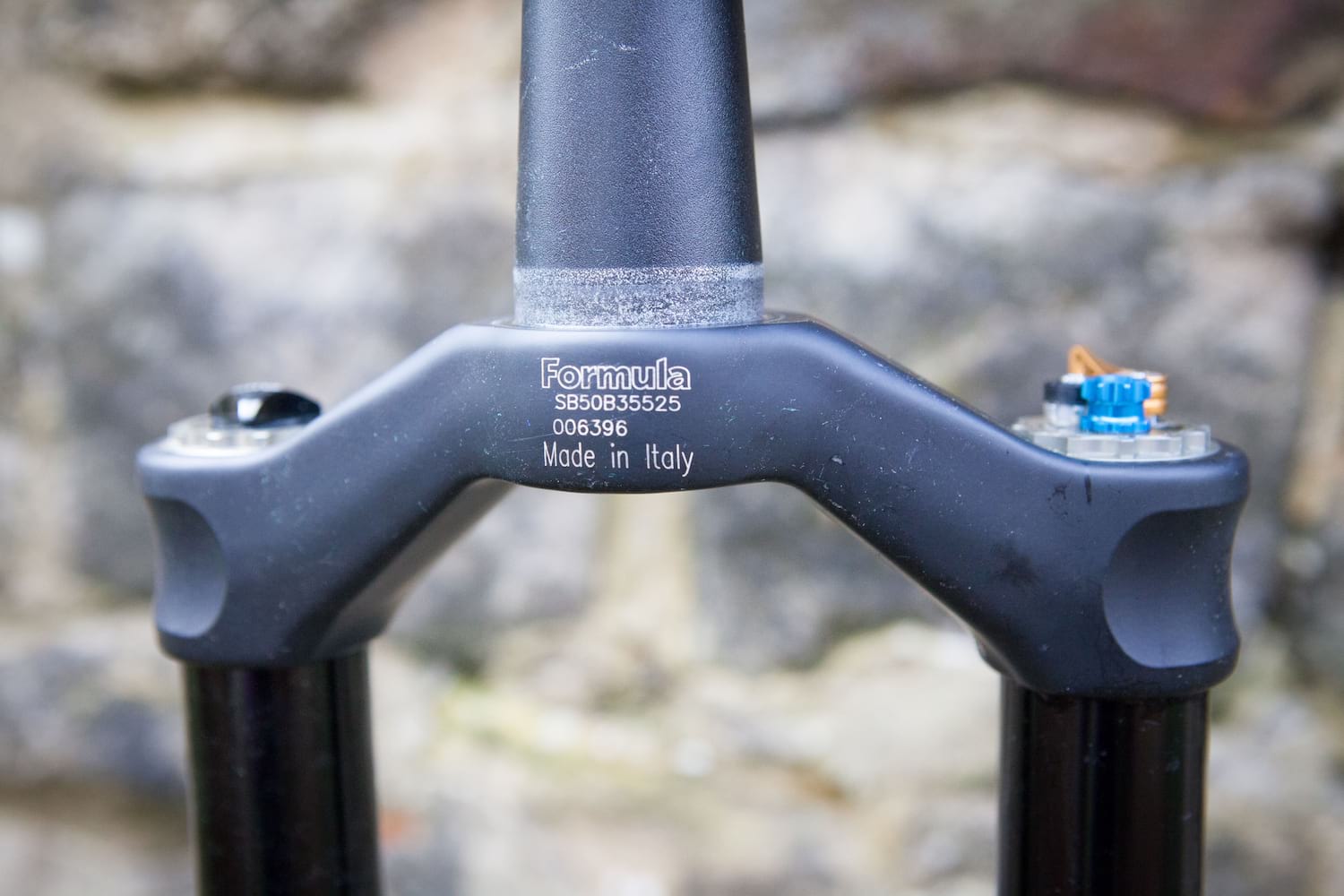
Going Downhill
The Selva’s raison d’etre is a little more than taking the sting out of modest trails, however. Point the bike down something steeper and more challenging and a couple of familiar traits came to the fore. I found the fork a little divey in the midstroke, although it would ramp up again at the end of the travel range. This was no means a critical flaw, and fairly typical of my experience of most forks out of the box. I’d find myself feeling like I was punching through the damping platform and front end of the bike would fall away from me. I cranked the low speed dial all the way round, and while it definitely helped, it didn’t entirely solve the problem. In fact in most of the pictures from that trip, I’m further back on the bike than I’d usually expect, unwilling to fully commit.
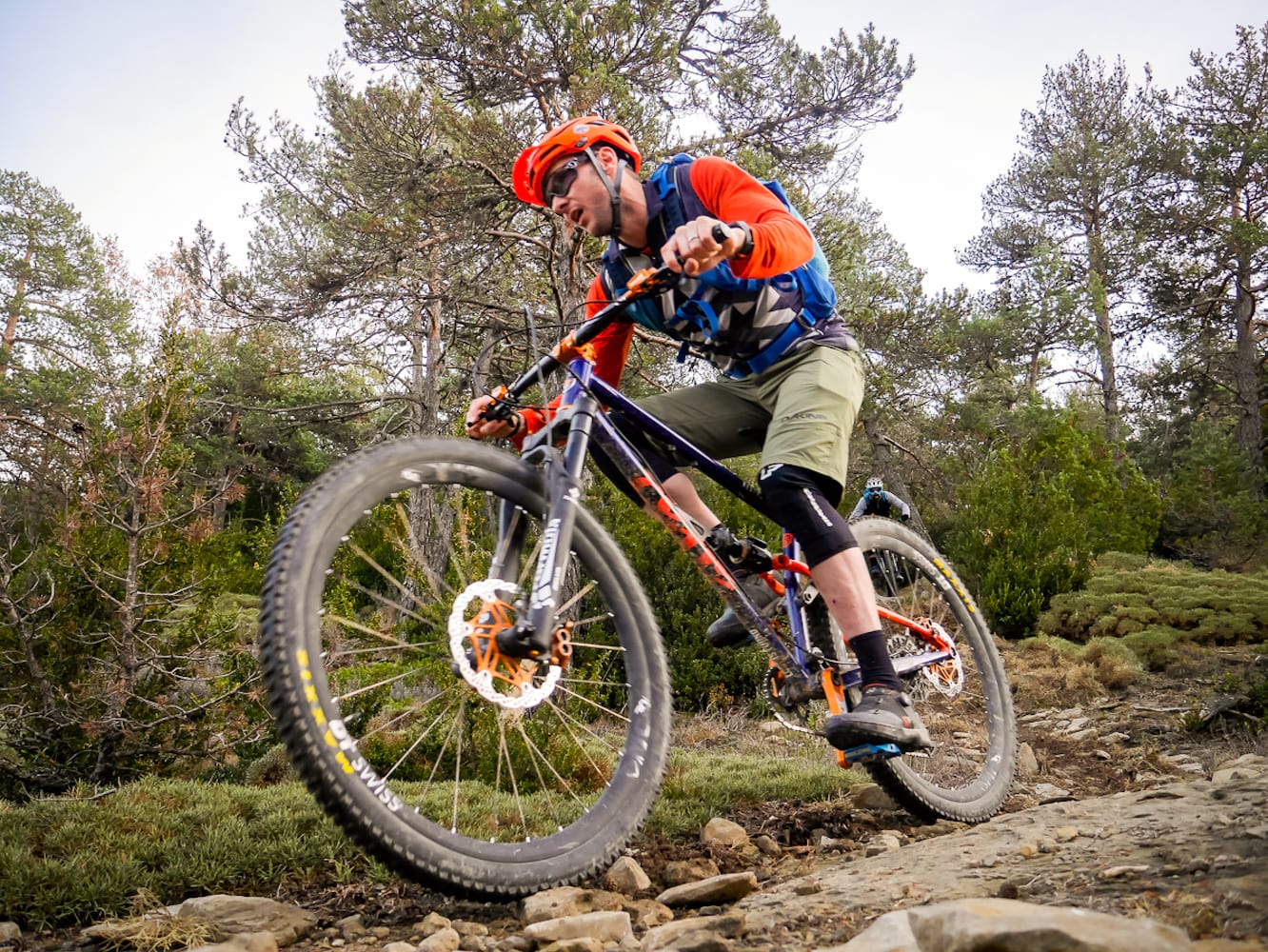
Enough of the initial damping woes though – as we’ve already explained, this is all tuneable to the rider. The lasting impression of the Selva on those first rides was how stiff it was. There was absolutely zero brake flutter, even with a 203mm brake rotor fitted. Combined with a DT Swiss carbon wheelset I’ve also been testing, riding through rock gardens, the front end held true, tracking with pin-point accuracy, making holding my (sometimes dubious) line choices a matter of pointing and hanging on.
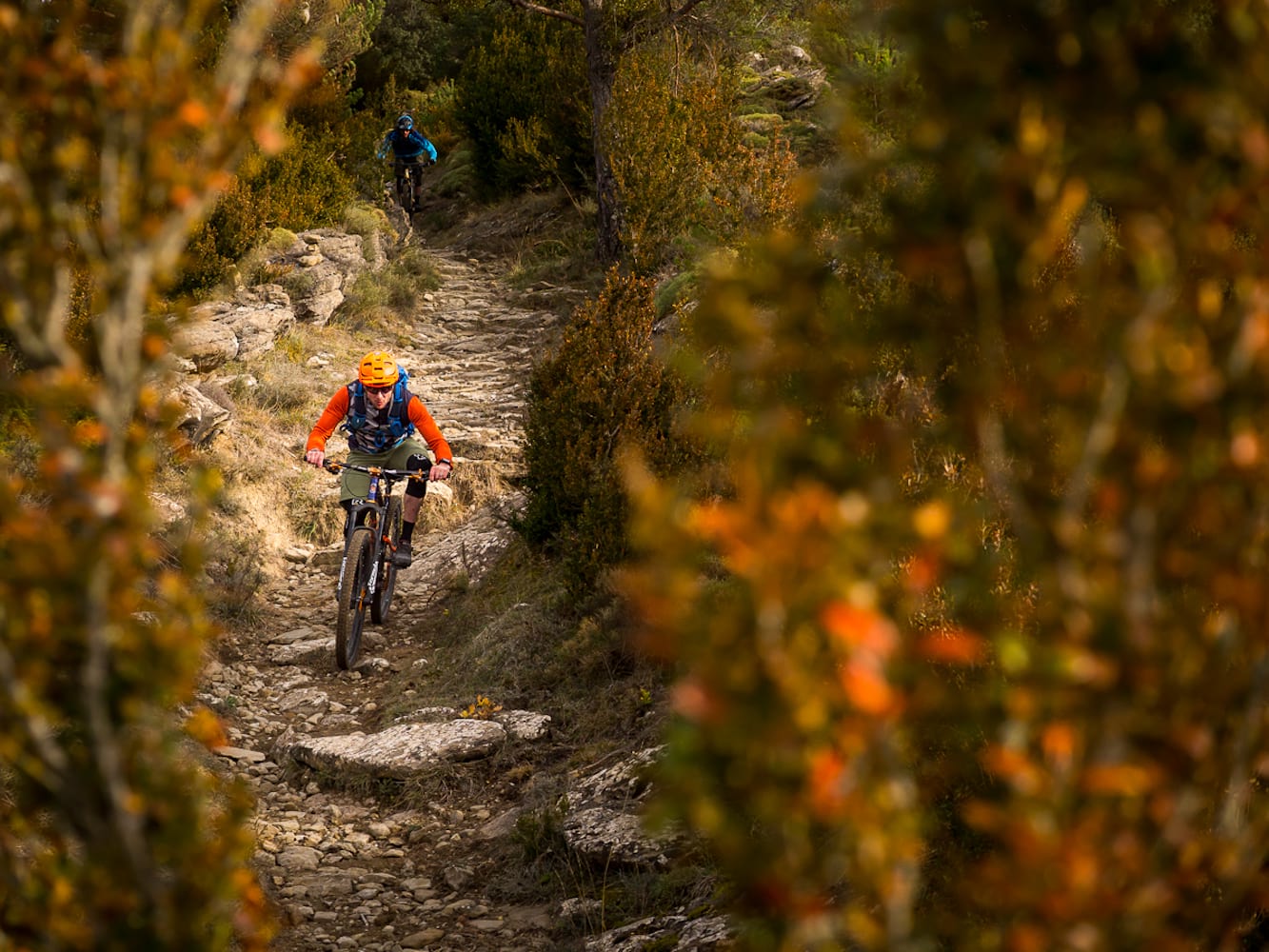
Secondly, it was impressive to see how active the Selva remained, both in those first couple of rides, but also later in the test. I say “see”, but the first sense to notice this was my hearing. There is a very audible squelch to the forks – to the degree that Formula do warn you that they are meant to do this, rather than being a symptom of cavitation or other general fork poorliness. It is loud enough that a couple of riding partners have commented on it, and while it doesn’t particularly bother me, if you are someone who likes a silent bike, you’ll be better served looking elsewhere for your fork needs, or investing in earplugs.
Round Two
Given that my only woes were in the mid-travel of the fork, I chose not to adjust the internal volume of the Selva, leaving oil levels as stock. And as I was mainly looking to firm up the low speed damping, and as Formula had provided us with five other CTS valves, I went with the orange “special” valve. Perfect. The green valve would have offered a little more damping across the board, but I thought I’d move up in increments if necessary.
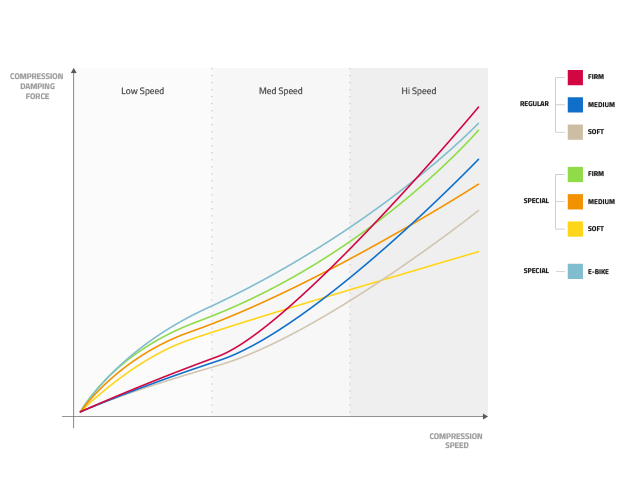
And you know what? It was. The valve created a noticeable and appreciable change to the ride characteristics of the fork. While the initial luxurious plushness was knocked back a little, I no longer felt like I was plunging through the mid-stroke. It felt like everything an enduro fork should be, pulling me into a more aggressive position on the bike, able to weight the front end with confidence, even as the trail tipped from steep through to ermagurd-that’s-really-steep. It swallowed big hits as well as holding up in the catch berms. The fork rarely bottomed out fully (it came close more often with the orange CTS tune), which is fine by me – it didn’t feel like the performance was compromised in any way, but if you are someone who only feels like you are getting full value if the travel indicator ends up rammed against the crown a couple of times every ride, you may be a bit disappointed.
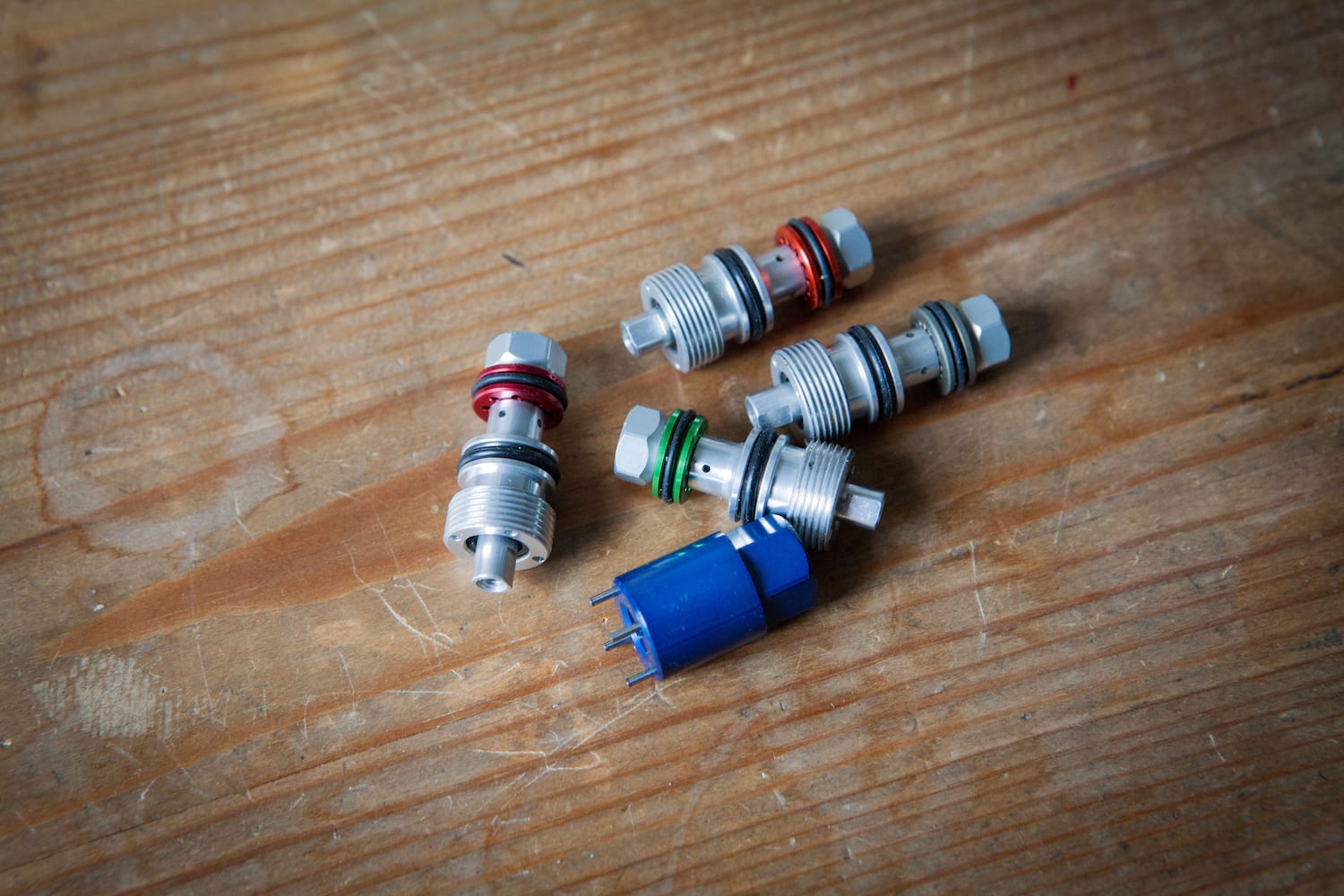
The downside to the valve change was a small loss of out-and-out bump sensitivity, even with the blue compression dial knocked back down again. I quite liked the less isolated feel this offered and I felt more aware of what was going on under my wheels. Over the course of a long ride though, it was possibly more fatiguing on the arms – I definitely felt a little more trail buzz while riding. In rough sections the bike seemed to track as well as it did before, with even big, repeated off-angled hits not phasing it. For me, the compromise was well worth making, and it would be unfair to paint this second version of the valve as a race-day-only option. It felt like the most composed, stiffest 29er enduro fork I’ve ever ridden (there are a few notable exceptions that I’ve not ridden recent iterations of; the current Fox 36 being the most glaring gap in my current fork ticklist).
Jekyll & Hyde
I was genuinely surprised at how big a difference the valves made to ride feel. It would be unfair to describe one as better than the other, but perhaps the stock set up of the Selva feels a little confused. Its chassis, stiffness and travel screams out to be thrown down the steepest trails possible. The stock damping, however feels less suited to this. Formula are far from the only company to do this, but when changing the damping characteristics requires spending an extra £48 (that’s per CTS Valve!), it is perhaps a little more galling. The £1060 up front price of the fork is in the ball park of equivalents, but it would be nice if that included at least a couple more valve options.
The flipside is once set up, Selva is immensely capable and feels as close to a race-ready enduro fork as you’ll get. Regardless of what your preferred ride feel is, it’s more than likely that you’ll be able to tune the fork to fit, if you are willing to spend a little money to do so.
Four months isn’t long enough to fully test the longevity of the fork, but popping the lowers off to adjust the travel (again an easy job) revealed some very healthy looking seals, so that bodes well, given the horribly wet and muddy winter we’ve had.
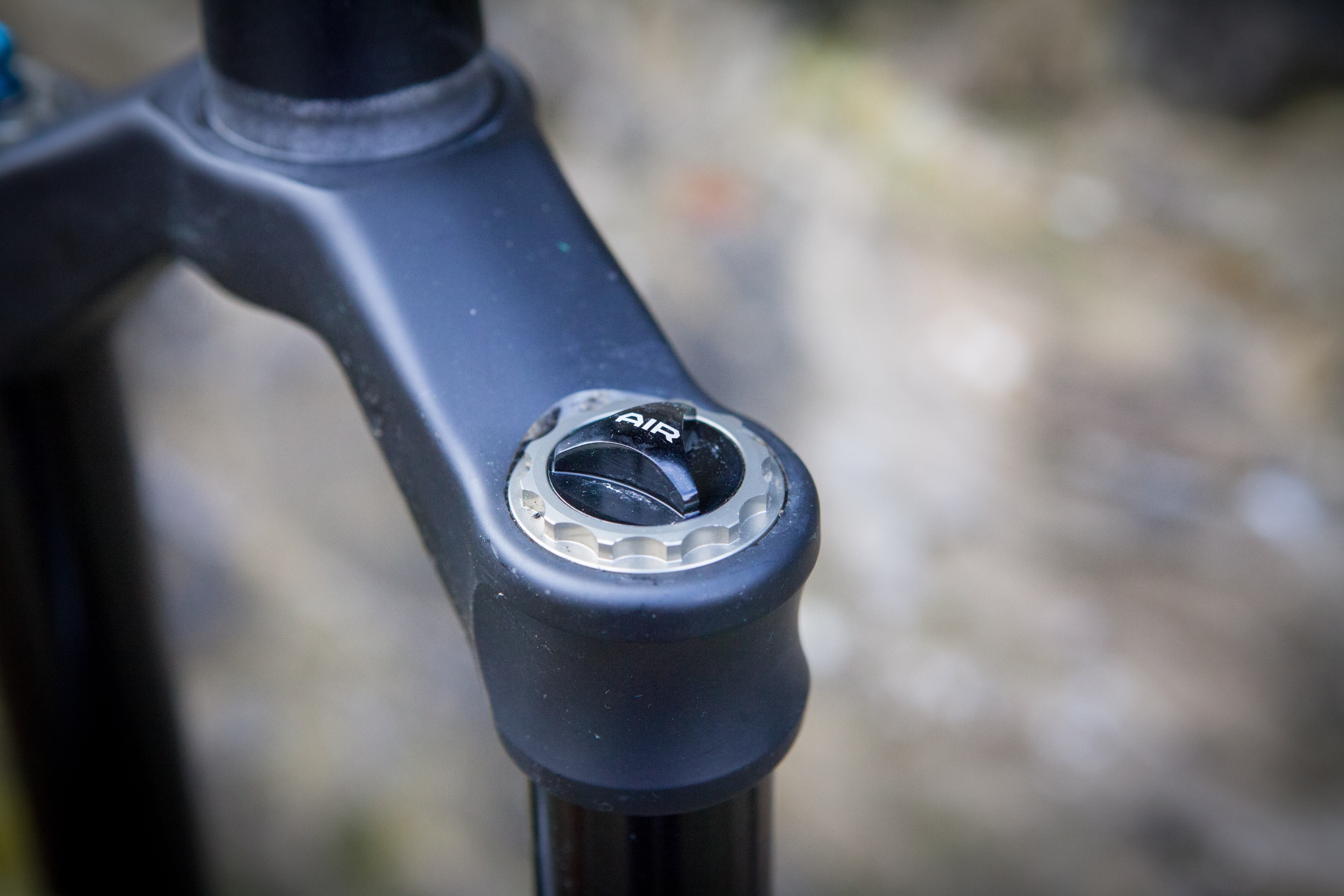
The “I’m not reading all that” round up
I guess the big question is why would you buy the Selva instead of an equivalent RockShox Lyrik or Fox 36? Well, it’s up there in terms of damping performance, and it’s as stiff as anything we’ve ridden for a competitive weight. There are some well thought out touches, and as I’ve discovered, the tuning capabilities are enormous – there’s certainly enough options here to leave the most avid of tinkers satisfied.
Overall, a superb fork, even if it takes a little work (and cash) to discover the full potential.






Formula make great forks, I have owned a set of 35’s for four years now. The only problem is the UK distributor doesn’t carry any spare parts for them, not even basic things like seals! Have been forced to get them from Germany. Oh they don’t have any Selva’s either,I am going to buy some for my new build, again these will have to come from Germany!
@goldenbrown – As you’re probably aware already, Silverfish-UK is no longer a distributor for Formula suspension.
Here’s the official word from Formula’s Marketing Manager, Vittorio;
“Right now we’re going through a transition for distribution in UK, Silverfish is no longer our distributor for forks, for the moment whoever want to buy a Formula fork in UK can contact directly us at serviceitalia@rideformula.com. We’ll have a new distributor in UK but we’ll announce that in autumn 2018.”
Hope that helps!
ST Wil.
Thanks Wil. Yes I was aware of that, The last time I spoke to Silverfish they told me that Formula were no longer shipping them product so it was pretty obvious. I hope the new importer does better with them. Cheers